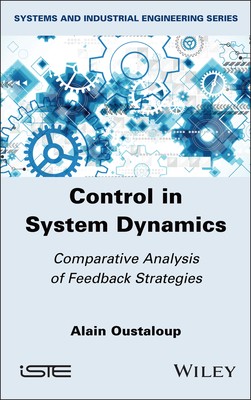
- We will send in 10–14 business days.
- Author: Xavier Colin
- Publisher: Wiley-ISTE
- ISBN-10: 1786300222
- ISBN-13: 9781786300225
- Format: 15.6 x 23.4 x 2.5 cm, kieti viršeliai
- Language: English
- SAVE -10% with code: EXTRA
Ageing Mechanisms and Kinetics of Composite Organic Matrices (e-book) (used book) | bookbook.eu
Reviews
Description
The main objective of this book is to provide to mechanical scientists and engineers the kinetic modeling tools necessary for predicting the damage state of organic composite matrices submitted to hydrolytic and oxidative ageing. These tools are derived from the degradation mechanisms and their validity is successfully checked from many experimental data. They can be interfaced with existing or under development computer codes for predicting the lifetime of composite structures. Particular attention is paid to the relationships between damage state and use properties in view of defining structural end-of-life criteria.
For this purpose the book is divided into three main parts. The first one is devoted to the presentation of the common aspects to all types of chemical degradation processes. Emphasis is put on specific aspects of composite structures, such as the role of interphase/interface or the anisotropy of reagent diffusion, but also on current issues in the field of material ageing such as the study of multiphysics couplings. The second part is focused on humid ageing. Physical processes linked to plasticization and swelling, are distinguished from chemical processes in particular from the matrix hydrolysis and its resulting damages at the microstructural scale (osmotic cracking, blistering, etc.). The third part concerns thermal ageing. The ultimate objective is to predict the consequences of thermal oxidation on thermomechanical properties of organic composite matrices, in particular on their glass transition temperature and elastic and fracture properties. In each part, the kinetic approach is illustrated by several practical examples.
EXTRA 10 % discount with code: EXTRA
The promotion ends in 22d.14:52:33
The discount code is valid when purchasing from 10 €. Discounts do not stack.
- Author: Xavier Colin
- Publisher: Wiley-ISTE
- ISBN-10: 1786300222
- ISBN-13: 9781786300225
- Format: 15.6 x 23.4 x 2.5 cm, kieti viršeliai
- Language: English English
The main objective of this book is to provide to mechanical scientists and engineers the kinetic modeling tools necessary for predicting the damage state of organic composite matrices submitted to hydrolytic and oxidative ageing. These tools are derived from the degradation mechanisms and their validity is successfully checked from many experimental data. They can be interfaced with existing or under development computer codes for predicting the lifetime of composite structures. Particular attention is paid to the relationships between damage state and use properties in view of defining structural end-of-life criteria.
For this purpose the book is divided into three main parts. The first one is devoted to the presentation of the common aspects to all types of chemical degradation processes. Emphasis is put on specific aspects of composite structures, such as the role of interphase/interface or the anisotropy of reagent diffusion, but also on current issues in the field of material ageing such as the study of multiphysics couplings. The second part is focused on humid ageing. Physical processes linked to plasticization and swelling, are distinguished from chemical processes in particular from the matrix hydrolysis and its resulting damages at the microstructural scale (osmotic cracking, blistering, etc.). The third part concerns thermal ageing. The ultimate objective is to predict the consequences of thermal oxidation on thermomechanical properties of organic composite matrices, in particular on their glass transition temperature and elastic and fracture properties. In each part, the kinetic approach is illustrated by several practical examples.


Reviews